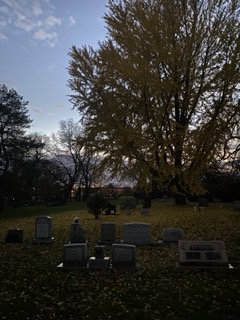
Ben Notis
on translating Moses Ibn Ezra
These eight Hebrew epigrams are about the death of Moses Ibn Ezra’s son, or sons. The order of their composition is unknown, and it is unclear if they are about one or multiple losses. I decided to arrange these translations in a way that narrates a journey through grief after the death of a child. I placed the first poem about sudden loss in the beginning, and then followed it with the epigram about attending the son’s funeral. The next four epigrams portray a parent inundated with intense waves of emotion released by weeping. The final two epigrams convey a sense of deep sorrow whose rawness has subsided due to the passage of time.
The spare, compact, and sometimes obscure Hebrew makes these poems difficult to translate. The verses are laden with biblical references, difficult constructions, and experiments with language. Like other Hebrew Andalusi poets, Moses Ibn Ezra’s verse was written in the style of medieval Arabic poetry. I needed to consult a number of resources, including a scholarly commentary, a range of Hebrew and Arabic dictionaries, and of course the Hebrew Bible.
The wordplay at the end of each epigram is almost completely lost in translation. In the original Hebrew, the differences in meanings and syntactical shifts induce a sense of surprise at a radical change. I believe that this effect mirrors the horrible sense of shock and disbelief when hearing of a relative’s sudden death. I tried to arrange these translations in a way that captures this cataclysmic paradigm shift.
I would like to thank my colleague and friend Ori Kinberg, a doctoral student in Hebrew literature at the Hebrew University of Jerusalem, whose comments on my translations were indispensable.
about the author
Medieval Hebrew poetry in al-Andalus (Islamic Spain) from the eleventh and twelfth centuries is an exciting fusion of biblical language and Arabic literary style. Moses Ibn Ezra (c. 1055-after 1138) was the third of the four great medieval Hebrew poets during that time. After coming of age among the Jews under the Zirid dynasty in Granada, he received a rabbinic education in the yeshiva (house of Jewish study) in Lucena. Like his educated contemporaries, he wrote both secular and liturgical poetry. In his secular poetry, Ibn Ezra is considered the most conservative of the medieval Hebrew poets because of his strict adherence to Arabic literary conventions. In his youth, he composed the Sefer ha-’Anaq (Book of the Necklace), a work of epigrams which demonstrates his mastery of the badī’, or classical Arabic poetic ornamentation. His Dīwan (poetry collection) contains many genres of medieval Hebrew verse, including wine, panegyric, complaint, love and friendship, and contemplation. After the Berber Almoravid conquest of al-Andalus in1090, Moses Ibn Ezra fled the kingdom of Granada and wandered in exile in Christian-ruled Northern Spain. There he wrote two Judeo-Arabic works, one on the use of biblical metaphor, and the other on Hebrew poetics.
about the translator
Ben Notis is a doctoral student in the University of Pennsylvania’s department of Near Eastern Languages and Civilizations. His dissertation focuses on Hebrew poetry written during an exciting time of Jewish-Muslim interaction in al-Andalus (Islamic Spain) in the eleventh and twelfth centuries. He hopes to explore lyrical complaints about physical and mental breakdowns, betrayal and abuse, separation from friends and lovers, and the vicissitudes of Time. His other interests include medieval Arabic poetry, the histories of madness and emotions, and the cultural history of the human body. A graduate of Brandeis’s Near Eastern and Judaic Studies department in 2017, he came to Penn after a series of odd jobs including farming, Bar Mitzvah tutoring, and book editing. When not studying, he enjoys visiting his nephews and baking.

photo by Ryan Hardy
